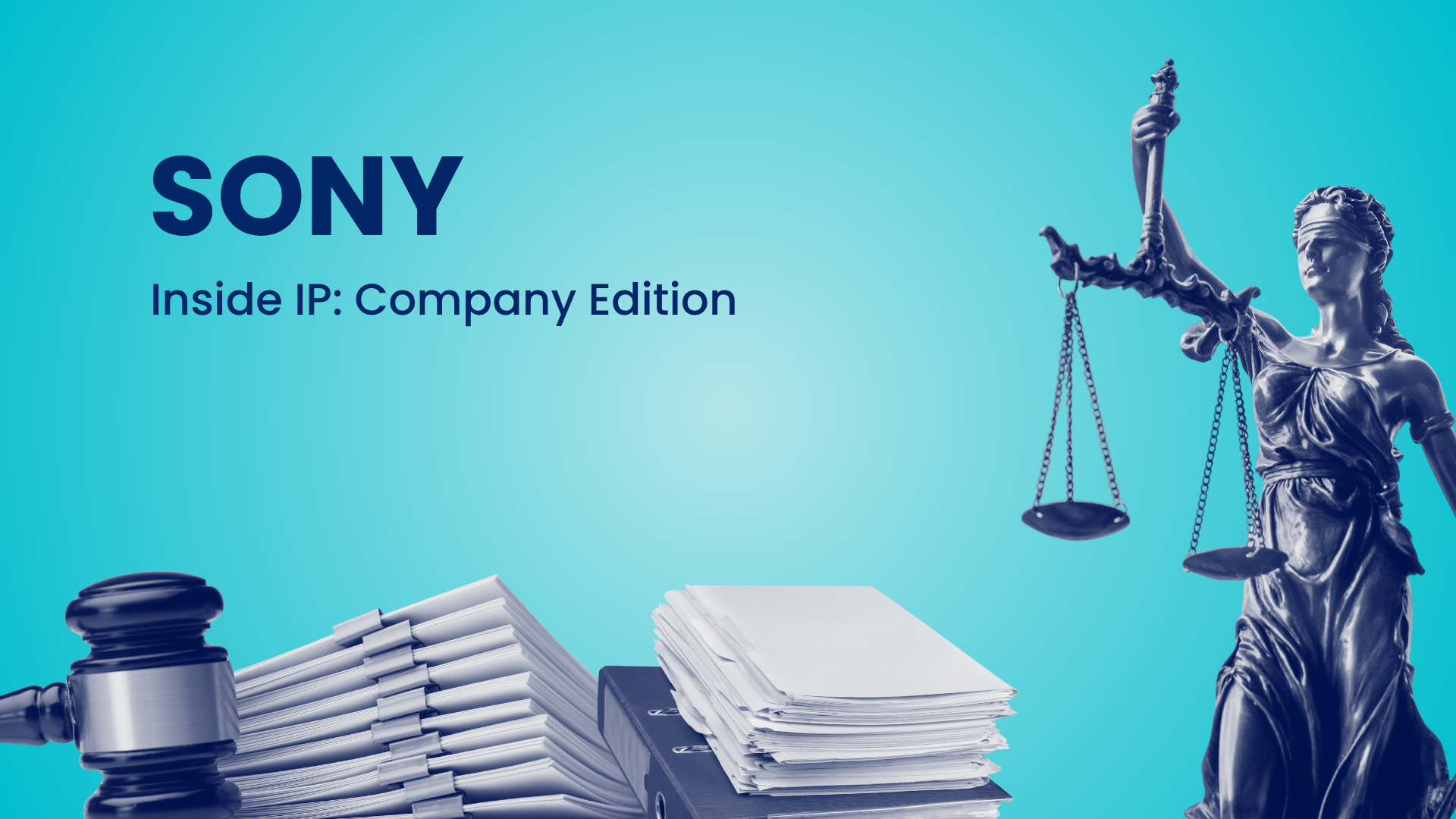In the dynamic landscape of global technology, few companies embody innovation and strategic foresight as profoundly as Sony. A global leader spanning electronics, entertainment, and gaming, Sony’s market position is underpinned by a robust intellectual property portfolio that shields its pioneering advancements. Far from being a passive collection of assets, Sony’s IP strategy is an active force, shaping its competitive edge, influencing industry standards, and securing its future in high-tech domains. An in-depth analysis of Sony’s patent activities reveals not just a history of invention, but a proactive approach to IP management, adapting to market shifts and leveraging its rich R&D heritage.
Evolving Litigation Dynamics and Sony’s Strategic IP Defense
Sony’s engagement in patent litigation offers a clear window into its strategic IP defense mechanisms, highlighting a nuanced approach to safeguarding its innovations. In the core computing sector, Sony experienced a notable moderation in litigation cases, with approximately 17 cases between 2018 and 2020, which then reduced to around 8 cases from 2021 to 2023. This shift may signify enhanced IP protection strategies or a greater emphasis on collaborative ventures over disputes. Concurrently, in non-core networking domains, Sony maintained a consistent level of engagement, facing around 3 cases in both the 2018-2020 and 2021-2023 periods, underscoring its continuous involvement in telecommunications and smart device ecosystems.
Sony’s preference for resolving disputes outside of court is evident, with a significant majority of cases—approximately 88% of 52 cases between 2018 and 2023—concluding through settlements or voluntary dismissals. In cases that progressed, Sony demonstrated a strong defensive posture, successfully defending itself in about 8% of contested situations. Furthermore, the company strategically leverages administrative review processes, having filed a limited number of Inter Partes Reviews (IPRs) against external patents, particularly in response to litigation. This demonstrates Sony’s proactive stance in challenging the validity of patents asserted against it, thereby reinforcing its defense strategy.
Litigation Trends: Shifting Landscape of Plaintiffs
The nature of patent litigation against Sony has evolved over the past decade, reflecting broader industry trends. While Non-Practicing Entities (NPEs) continue to be the primary source of legal challenges, the landscape of operating company involvement has also seen shifts.
Sony’s Patent Litigation by Plaintiff Type (Past Decade)
| Plaintiff Type | 2014–2019 Cases (Approx. 133) | 2020–2024 Cases (Approx. 26) |
|---|---|---|
| Non-Practicing Entities (NPEs) | 116 (Approx. 87%) | 23 (Approx. 88.5%) |
| Operating Companies | 15 (Approx. 11.3%) | 3 (Approx. 11.5%) |
| Universities | 0 | 2 |
Operating companies that litigated Sony include Broadcom Corp, Arris Enterprises LLC, Agis Software Development, InMusic Brands Inc, and Zipit Wireless Inc.
Sony’s litigation strategy is particularly visible in its engagement with key legal venues. The company has a significant presence in the Patent Trial and Appeal Board (PTAB), where approximately 24% of its total patent cases are filed. This highlights Sony’s strategic focus on defending its patents and challenging the validity of others through administrative proceedings. Concurrently, about 25% of its cases have been filed in the Eastern District of Texas (EDTX), a jurisdiction often favored by plaintiffs, indicating Sony’s readiness to engage robustly in patent infringement disputes within influential judicial districts.
Refining Patent Prosecution: Optimizing for Strategic Advantage
Sony’s commitment to continuous improvement extends to its patent prosecution processes, where it actively refines its filing strategy to enhance portfolio quality and efficiency. In recent years, internal analyses have identified instances where newly filed patent applications have encountered overlaps with Sony’s own robust and expansive existing patent portfolio. While this can lead to additional prosecution steps, such as amendments to distinguish new claims, it also underscores the depth and intensity of Sony’s R&D efforts and the comprehensive nature of its IP assets.
This rigorous internal review process demonstrates Sony’s dedication to optimizing its IP assets and ensures the distinctiveness and enforceability of its expanding portfolio. While there are associated costs in navigating these refinements—estimated to be in the range of several million USD over the last five years for active U.S.-granted patents—these expenditures reflect an investment in solidifying Sony’s IP position and streamlining its overall patent strategy for maximum effectiveness. This proactive approach includes a keen awareness of examiner grant rates within specific Art Units, such as Art Unit 3715, where Sony has secured a significant number of patents, indicating a strategic alignment of its prosecution efforts with favorable outcomes.
Pioneering Wireless Standards: Sony’s Enduring Influence
Sony is a significant contributor to the evolution of wireless communication, particularly within Wi-Fi standards. The company’s strategic commitment to advancing wireless technologies is evident in its growing patent ownership and active participation in standard development.
Sony’s Wi-Fi Contributions and Patent Ownership
| Wi-Fi Standard | Sony’s Contribution Level | Sony’s Share of Related Patent Families | Noteworthy Technical Contributions |
|---|---|---|---|
| Wi-Fi 6 | Approximately 1% | Approximately 1.13% | |
| Wi-Fi 7 | Approximately 0.93% | Approximately 3.52% | Multi-link Operation, Multi-AP Coordination |
| Wi-Fi 8 | Approximately 13 contributions | Early-stage development | Enhanced HCCA, Coordinated Spatial Reuse, OBSS Interference Impact |
Data on contributions for Wi-Fi 7 are based on a total of 95 contributions.
While maintaining a consistent level of contribution to Wi-Fi 6 and 7, Sony’s proportional share of patent ownership in Wi-Fi 7 has seen a substantial increase, reflecting a strategic move to integrate the latest wireless innovations into its diverse product offerings. Looking ahead, Sony has already begun contributing to the development of the nascent Wi-Fi 8 standard, with key contributions in areas like Enhanced HCCA for Controlled UHR Scenarios and Coordinated Spatial Reuse. This early engagement positions Sony as an influential voice in shaping future connectivity, underscoring its role as a potential licensing partner for companies navigating the evolving Wi-Fi market.
Spotlight on Influential Patents: Highlighting Core Innovations
Sony’s intellectual property portfolio is not merely extensive but also deeply influential, as evidenced by the high citation counts of its foundational patents. These patents indicate areas where Sony has made significant, industry-shaping contributions.
Sony’s Most Highly Cited Patents (more than 300)
| Patent Number | Primary Technical Domain |
|---|---|
| US8811017B2 | Imaging Systems, Image Quality Enhancement |
| US8987794B2 | Imaging Technologies |
| US8793620B2 | Consumer Electronics, Display Technology |
Note: Patent numbers are presented as hyperlinked for reference purposes.
The patent US8811017B2, which focuses on enhancing image quality in imaging systems, stands out with over 950 citations. This particular patent is a testament to Sony’s profound impact on imaging technologies and consumer electronics, serving as a foundational reference for subsequent innovations across the industry. Such high citation figures validate the foundational nature of Sony’s innovations and their broad relevance across various technical domains.
Global Innovation Nexus: Sony’s Geographic and Inventor Footprint
Sony’s patent filing strategy mirrors its global business objectives, ensuring IP protection across crucial markets and fostering innovation through a geographically diverse talent pool.
Sony’s Top Patent Filing Jurisdictions
| Jurisdiction | Number of Patents (Approximate) | Strategic Significance |
|---|---|---|
| United States | 87,000+ | Dominant region for R&D, manufacturing, and distribution, including Taiwan (~10,700), Korea (~10,100), Singapore (~400), India (~190), and Hong Kong (~230). |
| Japan | 50,000+ | Home country, core R&D hub, domestic market protection. |
| China | 38,000+ | Largest manufacturing base, rapidly growing consumer market. |
| European Patents | 36,000+ | Access to high-value European markets with stringent IP enforcement (includes UK: ~2,500, Germany: ~2,200). |
| WIPO (WO) | 29,000+ | Global strategy for broad IP protection across multiple jurisdictions. |
| Asia-Pacific Total | 101,000+ | Emerging markets like Brazil (~2,000), Mexico (~1,000), Canada (~1,800), and Australia (~1,500), reflecting expanding geographical reach and new growth opportunities. |
| Other Markets | Varied | Emerging markets like Brazil (~2,000), Mexico (~1,000), Canada (~1,800), Australia (~1,500), reflecting expanding geographical reach and new growth opportunities. |
Sony strategically expands its patent footprint, with a strong emphasis on established markets like the U.S., Japan, and Europe, while also showing significant growth in the Asia-Pacific region. Emerging markets such as India, Southeast Asia (Malaysia, Philippines, Indonesia), and Latin America (Brazil, Mexico) are becoming new focal points, signaling Sony’s intent to capture future growth opportunities.
This global reach is fueled by a diverse inventor base. While Japan, Sony’s home country, remains a primary source of innovation, the company actively leverages talent from the United States, the United Kingdom, Sweden, and China. This broad reliance on international brainpower underscores Sony’s commitment to tapping into global expertise to drive its technological progress. Noteworthy inventors like Morioka Yuichi, Sugaya Shigeru, Sakoda Kazuyuki, and Kosuke Aio have been instrumental in contributing to Sony’s Wi-Fi 6-related patents. Intriguingly, some leading contributors to Sony’s Wi-Fi 7 patents, such as Xin Liangxiao and Abouelseoud Mohamed, have transitioned to other prominent technology organizations, highlighting the dynamic flow of top-tier IP talent across the industry and potential opportunities for strategic talent acquisition.
Strategic IP Evolution: Focus on Semiconductor and Interactive Technologies
Sony’s strategic patenting efforts are concentrated in key technological domains that underscore its core business strengths and future growth areas. The company’s patent filings reflect a deep commitment to advancing semiconductor and interactive technologies.
Sony’s Key Patent Focus Areas (CPC Classifications 2013-2023)
- Development of semiconductor devices, particularly for enhanced image sensing capabilities.
- Innovations in user interface technologies to improve interactive experiences with electronic devices.
- Cutting-edge image sensor technologies support high-quality video and photo capture.
- Advanced methods in color television systems for superior display and broadcast quality.
- Techniques enhancing the transmission and processing of television signals.
These focused efforts demonstrate Sony’s dedication to pushing the boundaries of what is possible in areas critical to its consumer electronics, gaming, and imaging businesses. By concentrating its IP resources here, Sony not only protects its existing innovations but also paves the way for future breakthroughs that will define the next generation of connected experiences.
Navigating the 5G Landscape: Proactive IP Strategy
As Sony continues to expand its presence in the burgeoning 5G domain with products like Xperia smartphones, PlayStation consoles with 5G connectivity, and IoT devices, its financial commitment to this area is clear. In 2023, an estimated 10-12% of Sony’s total revenue, amounting to approximately $8-9.5 billion, was attributable to 5G-enabled devices and services.
While Sony has not yet faced significant 5G patent disputes, its increasing involvement in wireless technologies inherently positions it for higher litigation risks as its portfolio of 5G-enabled products grows. To proactively address these potential challenges, Sony is strategically focused on fortifying its patent portfolio. This approach is designed to safeguard its innovations and ensure its continued leadership within the intensely competitive 5G market, allowing it to contribute to and benefit from the next wave of connected technologies.
Want regular updates on how your competitors are using patents to gain an edge?
Subscribe to our Inside IP newsletter for insights into patent filings, litigation shifts, licensing opportunities, and strategy breakdowns across tech and innovation-driven sectors.
Track your Competitors’ IP Strategy
Subscribe for Updates

